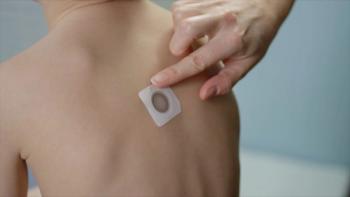
- Consultant for Pediatricians Vol 8 No 6
- Volume 8
- Issue 6
Traction Alopecia From Atopic Dermatitis
A 5-month-old Asian boy was brought for evaluation of hair loss and a red, scaly rash on the scalp and body. The rash had not responded to hydrocortisone 2.5% ointment. There was a family history of asthma, food allergies, and allergic rhinitis. His mother had Hashimoto thyroiditis.
A 5-month-old Asian boy was brought for evaluation of hair loss and a red, scaly rash on the scalp and body. The rash had not responded to hydrocortisone 2.5% ointment. There was a family history of asthma, food allergies, and allergic rhinitis. His mother had Hashimoto thyroiditis.
The child had moderate atopic dermatitis with associated intense pruritus, which he attempted to alleviate by rubbing his occipital prominence vigorously on flat surfaces.
Other entities that were considered in the differential diagnosis included tinea capitis, telogen effluvium, neonatal lupus, and alopecia areata. This child’s atopic dermatitis could have been mistaken for tinea capitis because of its location and persistence despite treatment with topical corticosteroids. A potassium hydroxide preparation was negative for fungi. Telogen effluvium is also common in infants; however, it is usually nonfocal over prominences. Neonatal lupus would most likely present on the face or frontal scalp of an infant who had a family history of systemic lupus erythematosus in the mother. Alopecia areata was a consideration in this case given the mother’s history of autoimmune thyroiditis; however, the erythema and scaliness of the scalp pointed toward atopic dermatitis with traction alopecia.1,2
Treatment required the use of moderate-potency topical corticosteroids, because the rash had failed to resolve with a low-potency preparation.
References:
REFERENCES:
1
. Shapiro J, Wiseman M, Lui H. Practical management of hair loss.
Can Fam Physician.
2000;46: 1469-1477.
2
. Lio PA. What’s missing from this picture? An approach to alopecia in children.
Arch Dis Child Educ Pract Ed.
2007;92:193-198.
Articles in this issue
over 16 years ago
Juvenile Plantar Dermatosis: Readers’ Remediesover 16 years ago
Should Pica Lead to Consideration of Lead Poisoning?over 16 years ago
Vitiligoover 16 years ago
When You Can’t Pry Those Hiding Eyesover 16 years ago
Why Does Facial Rash Flare When Treatment Stops?over 16 years ago
Infant With All-Over Rash, Edema, and Lethargyover 16 years ago
Solution for a Sticky Summer Situationover 16 years ago
May-Thurner SyndromeNewsletter
Access practical, evidence-based guidance to support better care for our youngest patients. Join our email list for the latest clinical updates.








